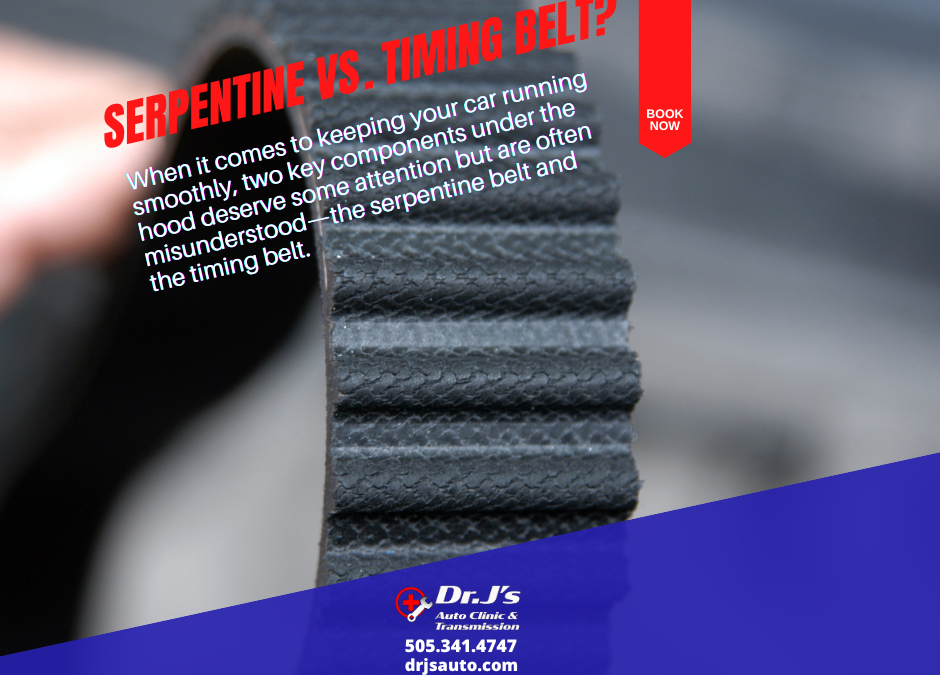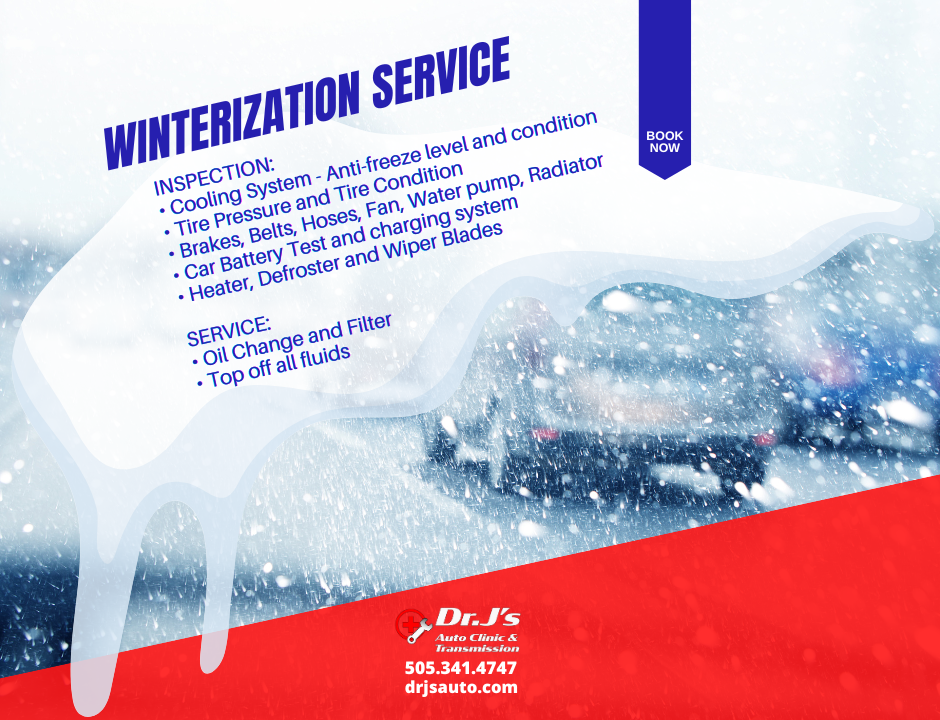


Stay Winter-Ready with Dr. J’s Winterization Special
January 15, 2025When it comes to keeping your car running smoothly, two key components under the hood deserve some attention but are often misunderstood—the serpentine belt and the timing belt. While they may sound alike, they serve different purposes in your vehicle. At Dr. J’s Auto Clinic, we’re here to clear up any confusion and help you understand when it’s time for a replacement.
What Does a Serpentine Belt Do?
The serpentine belt is a crucial single belt that powers multiple systems in your car by connecting to the engine. It’s responsible for driving components such as the alternator, power steering pump, air conditioning compressor, and sometimes even the water pump. Without a functioning serpentine belt, these systems can’t work, which means your car can’t operate the way it should.
You might recognize it by its long, winding path snaking through pulleys under the hood—hence the name “serpentine.”
What Does a Timing Belt Do?
The timing belt, on the other hand, focuses specifically on synchronizing the engine’s internal components. It ensures that the crankshaft and camshaft rotate in perfect harmony so that the engine’s valves open and close at the right time. Without this precise synchronization, the engine won’t run properly and could even become seriously damaged.
Timing belts usually have teeth to grip and turn the pulleys, while serpentine belts are smooth or ribbed.
What’s the Key Difference Between the Two?
The main difference is their function. The serpentine belt assists with driving the vehicle’s external systems like the air conditioning and alternator, while the timing belt is critical for the internal timing of engine components. Additionally, timing belts typically require specific scheduled replacements, while serpentine belts often give warning signs of wear before they fail.
When Should You Replace Them?
Serpentine Belt Replacement
The good news is that serpentine belts last a good while—anywhere from 60,000 to 100,000 miles, depending on your vehicle and driving habits. However, they don’t last forever. Look out for these warning signs:
- Squealing or chirping noises under the hood
- Visible cracks or fraying on the belt
- Loss of power to critical systems like AC or power steering
If you notice any of these red flags, it’s time to have your serpentine belt inspected and replaced if needed.
Timing Belt Replacement
Timing belts, on the other hand, operate on a stricter schedule. Most manufacturers recommend replacement every 60,000 to 100,000 miles—double-check your vehicle’s owner manual for the exact interval. Unlike the serpentine belt, timing belts often fail without warning, so sticking to these intervals is crucial to avoid expensive engine damage.
If your car is overdue for a timing belt replacement, we highly recommend scheduling a service appointment. It’s a proactive measure that can save you from costly repairs down the road.
Final Thoughts
Both serpentine belts and timing belts are staples of your car’s overall system, and keeping them in good condition will prevent breakdowns and extend the life of your vehicle. At Dr. J’s Auto Clinic, we’re always here to inspect, advise, and replace these essential components when needed. If you’re experiencing issues or are unsure about your belt replacement schedule, don’t hesitate to give us a call or stop by. Your car—and your wallet—will thank you!




